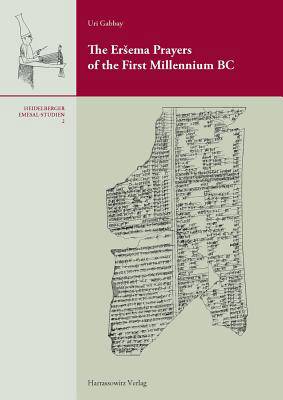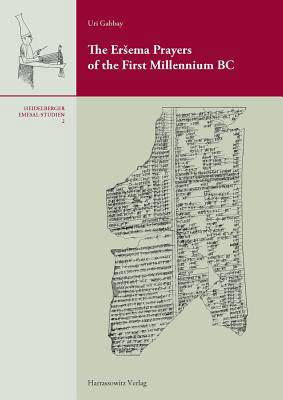
- Afhalen na 1 uur in een winkel met voorraad
- Gratis thuislevering in België vanaf € 30
- Ruim aanbod met 7 miljoen producten
- Afhalen na 1 uur in een winkel met voorraad
- Gratis thuislevering in België vanaf € 30
- Ruim aanbod met 7 miljoen producten
Omschrijving
The Ersema Prayers of the First Millennium BC contains philological editions of the Mesopotamian Ersema prayers, which were written in the Emesal register of Sumerian and often accompanied by interlinear Akkadian translations. The Ersema prayers are relatively short compositions belonging to the larger corpus of Emesal prayers, and they were part of the repertoire of a cultic functionary known as the gala/kalu. The content of these prayers, like that of the other genres of Emesal prayers, is usually lamentful, mourning the destruction of cities and temples. The book treats both types of Ersemas known from the first millenium BC: those appended to longer Emesal prayers known as Balag compositions, and individual Ersema prayers ("Ritual Ersemas"). Over eighty prayers are listed in an ancient catalog from Nineveh. This book edits them according to their sequence in the Nineveh catalog and on the basis of over one hundred tablets and fragments stemming from various provenances, especially Nineveh, Babylon, and Uruk. The book also includes editions of unidentified Ersemas and of other fragments that may be Ersemas. In addition to a score transliteration, a translation, and philological notes, the evidence for the ritual performance of each Ersema is provided. Where Old Babylonian forerunners and first-millennium BC parallels, especially from Balag compositions, are known, they are presented in synoptic transliterations with the Ersemas they parallel.
Specificaties
Betrokkenen
- Auteur(s):
- Uitgeverij:
Inhoud
- Aantal bladzijden:
- 408
- Taal:
- Engels
Eigenschappen
- Productcode (EAN):
- 9783447068475
- Verschijningsdatum:
- 27/11/2015
- Uitvoering:
- Hardcover
- Formaat:
- Genaaid
- Afmetingen:
- 218 mm x 302 mm
- Gewicht:
- 1791 g

Alleen bij Standaard Boekhandel
+ 399 punten op je klantenkaart van Standaard Boekhandel
Beoordelingen
We publiceren alleen reviews die voldoen aan de voorwaarden voor reviews. Bekijk onze voorwaarden voor reviews.










